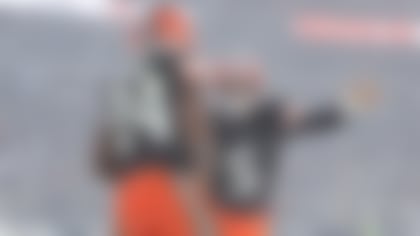Through 16 regular-season games in 2007 and two playoff contests, no team that faced the undefeated New England Patriots could solve their record-breaking offense. Then came Super Bowl XLII. How did Steve Spagnuolo, the New York Giants' defensive coordinator, do what no other team could?
Spagnuolo developed a game plan that applied constant pressure to quarterback Tom Brady and stopped the run at the same time. According to people within the Patriots' organization, the plan got some of its substance from game plans used against them earlier in the season -- specifically the Baltimore Ravens from Week 13 and the San Diego Chargers from the AFC Championship Game. And, of course, it had its own flavor.
Baltimore and San Diego got to Brady for a combined five sacks and another nine hits in those two games. Spagnuolo saw enough on the tapes to go forward with a game plan built on aggression. That plan -- the fire-zone package employed by Spagnuolo and the Giants -- was the vehicle to bring down New England.
As I wrapped up this summer's NFL.com camp tour, it was clear that teams throughout the league were developing packages similar to the Giants' plan. Defensive coaches realize that giving Brady, Peyton Manning and the other elite quarterbacks time to throw is a guaranteed way to get beat. The problem some teams face is that they don't have the critical components necessary to copy Spagnuolo's strategy.
Here are the two key ingredients needed to mimic the New York defense:
Three versatile defensive ends
When the ends engage the offensive linemen as rushers, for one split second, and then turn and drop into pass-coverage zones, the blitzer (linebacker or defensive back) is through the line before the blocker can readjust to the real rusher. The Giants featured Michael Strahan and Osi Umenyiora on the outside and Justin Tuck on the inside over a guard. They could all drop as well as rush. A linebacker would show blitz, giving the Patriots the idea that the receiver on the blitz side was "hot," and Brady would look to throw hot right away. As he set to throw, Umenyiora would drop and take the hot receiver away, forcing Brady to go elsewhere. And, by then, Strahan or Tuck would get to the quarterback.
A three-deep zone
Behind that defensive front full of "jokers," or hybrid players, the Giants played a lot of three-deep zone to prevent the big pass that is so prevalent when teams blitz from man-to-man schemes. With Randy Moss on the field, the secondary was going to play a soft deep coverage and then come up to make tackles after short completions -- if Brady had the time to get the pass off.
What made the Giants' plan interesting was the pre-snap look their defense gave Brady. It encouraged him to look one way when the fire-zone pressure was actually taking the read away after the snap.
Teams like the Philadelphia Eagles, Washington Redskins, Arizona Cardinals, Buffalo Bills and Oakland Raiders, to name a few, will have solid versions of the Giants package this season. Those teams will be heating up the quarterbacks they face in what should be a very physical year for signal-callers. While the Giants employ a 4-3 defense, the alignment doesn't matter; breaking down protection schemes with the Spagnuolo package will be effective in 2008.
The Redskins now have Jason Taylor and Andre Carter as their defensive ends, both of whom can drop as well as rush. They need the Tuck-like component to make it work.
The Cardinals have Travis LaBoy, Bert Berry, Chiki Okeafor and Darnell Dockett who can all rush the passer or drop into coverage. They also have linebackers Karlos Dansby and Clark Haggans, as well as safety Adrian Wilson, who can blitz as well as drop into coverage. It will be tough for offensive linemen and quarterbacks to figure out which of those four are rushing and which four are dropping into coverage.
So many teams were installing fire-zone pressure calls in the first and second weeks of camp that I'm confident offenses are going to see it all season long.



